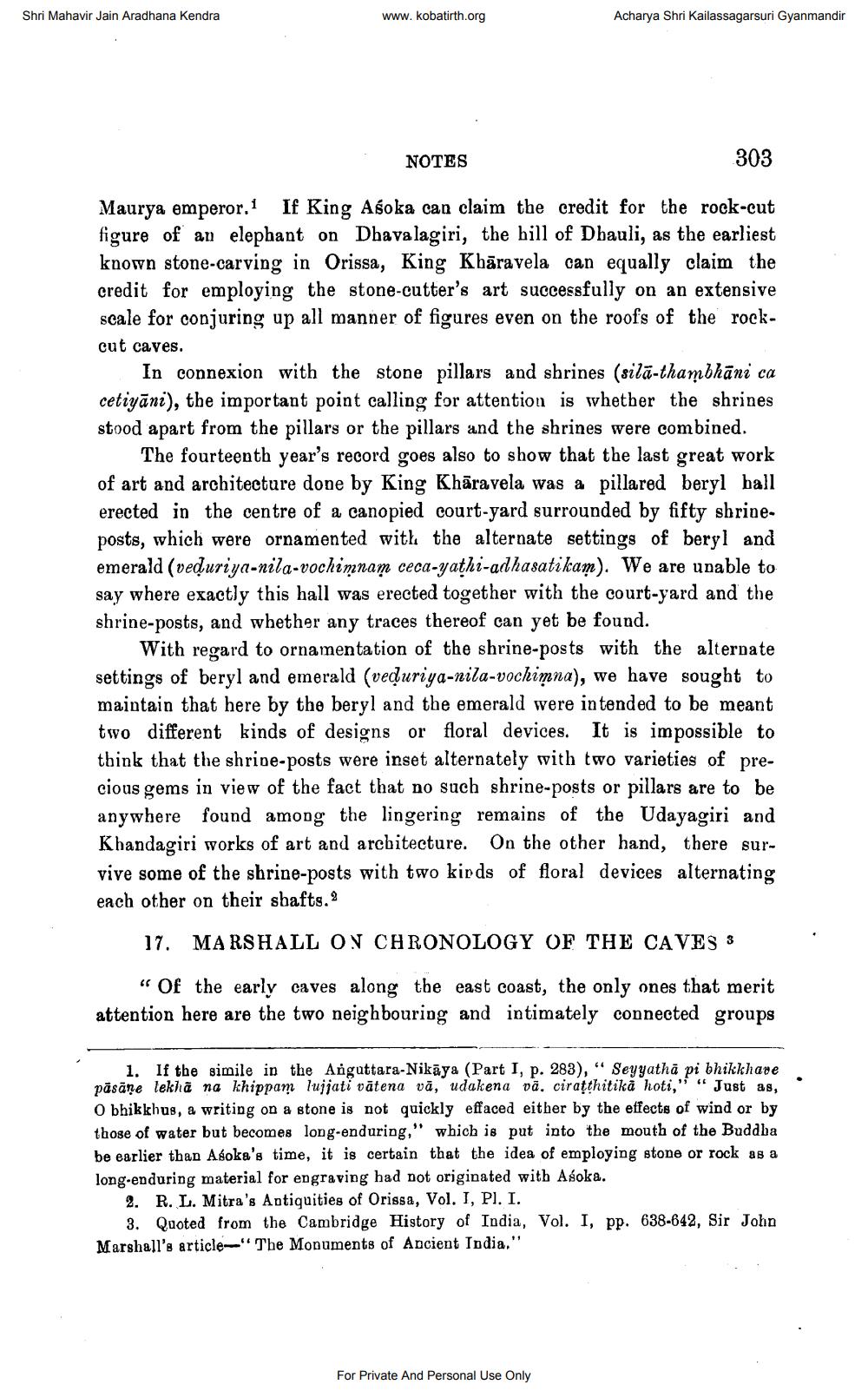________________
Shri Mahavir Jain Aradhana Kendra
www.kobatirth.org
NOTES
303
Maurya emperor.1 If King Aśoka can claim the credit for the rock-cut figure of an elephant on Dhavalagiri, the hill of Dhauli, as the earliest known stone-carving in Orissa, King Kharavela can equally claim the credit for employing the stone-cutter's art successfully on an extensive scale for conjuring up all manner of figures even on the roofs of the rock
cut caves.
Acharya Shri Kailassagarsuri Gyanmandir
In connexion with the stone pillars and shrines (sila-thambhāni ca cetiyani), the important point calling for attention is whether the shrines stood apart from the pillars or the pillars and the shrines were combined.
The fourteenth year's record goes also to show that the last great work of art and architecture done by King Kharavela was a pillared beryl hall erected in the centre of a canopied court-yard surrounded by fifty shrineposts, which were ornamented with the alternate settings of beryl and emerald (veduriya-nila-vochimnam ceca-yathi-adhasatikam). We are unable to say where exactly this hall was erected together with the court-yard and the shrine-posts, and whether any traces thereof can yet be found.
With regard to ornamentation of the shrine-posts with the alternate settings of beryl and emerald (veḍuriya-nila-vochimna), we have sought to maintain that here by the beryl and the emerald were intended to be meant two different kinds of designs or floral devices. It is impossible to think that the shrine-posts were inset alternately with two varieties of precious gems in view of the fact that no such shrine-posts or pillars are to be anywhere found among the lingering remains of the Udayagiri and Khandagiri works of art and architecture. On the other hand, there survive some of the shrine-posts with two kinds of floral devices alternating each other on their shafts.2
17. MARSHALL ON CHRONOLOGY OF THE CAVES 3
"Of the early caves along the east coast, the only ones that merit attention here are the two neighbouring and intimately connected groups
""
na
1. If the simile in the Anguttara-Nikaya (Part I, p. 283), Seyyatha pi bhikkhave pāsāne vātena vā, ciratthitika hoti," O bhikkhus, a writing on a stone is not quickly effaced either by the effects of wind or by those of water but becomes long-enduring," which is put into the mouth of the Buddha be earlier than Asoka's time, it is certain that the idea of employing stone or rock as a long-enduring material for engraving had not originated with Aśoka.
2. R. L. Mitra's Antiquities of Orissa, Vol. I, Pl. I.
3. Quoted from the Cambridge History of India, Vol. I, pp. 638-642, Sir John Marshall's article" The Monuments of Ancient India."
For Private And Personal Use Only




